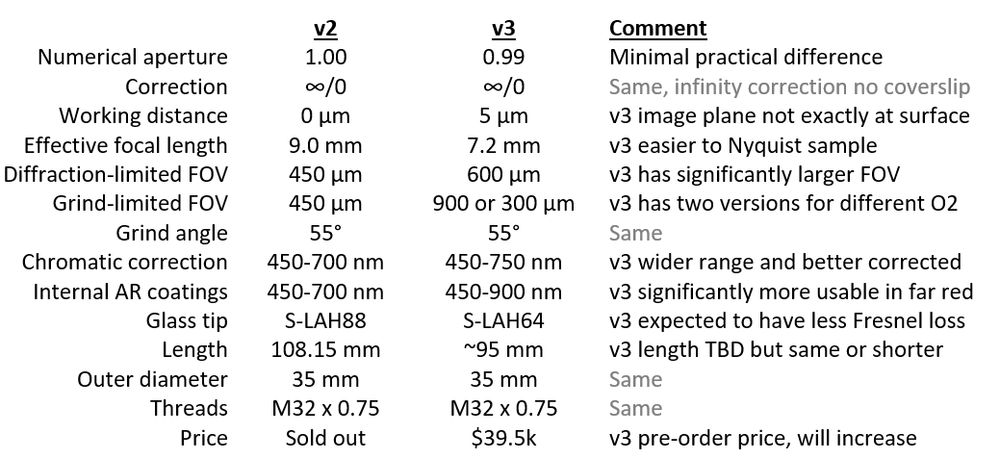I suggest using a slit for only modest adjustments in NA because of light efficiency.
I suggest using a slit for only modest adjustments in NA because of light efficiency.

I'm hoping to talk with researchers at Seeing Is Believing and SfN (or by email/DM) and then start the detailed design.
Please reach out to me [email protected].
I'm hoping to talk with researchers at Seeing Is Believing and SfN (or by email/DM) and then start the detailed design.
Please reach out to me [email protected].

Official PN is 57-14-7 and it will be colloquially "AMS-AGY v3" on our website.
It's 10mm shorter than v2. OD is flared near the threads: 30mm OD for most and 37mm OD near the threads, whereas v2 was 35mm OD all the way.
Official PN is 57-14-7 and it will be colloquially "AMS-AGY v3" on our website.
It's 10mm shorter than v2. OD is flared near the threads: 30mm OD for most and 37mm OD near the threads, whereas v2 was 35mm OD all the way.

For larger samples e.g. zebrafish the grind position is wider to capture the entire FOV.
For larger samples e.g. zebrafish the grind position is wider to capture the entire FOV.
5. Two different options for grind position: one for situations where O2 is NA ~0.95 and another for NA ~0.8. This one requires a bit more explanation.
5. Two different options for grind position: one for situations where O2 is NA ~0.95 and another for NA ~0.8. This one requires a bit more explanation.
1. Generally better imaging quality especially for those pushing the FOV. I can send plots to those interested.
2. The image plane is a few microns off the glass tip to mitigate problem with dust.
3. Improved capture of high-angle rays despite slightly reduced NA of 0.99.
1. Generally better imaging quality especially for those pushing the FOV. I can send plots to those interested.
2. The image plane is a few microns off the glass tip to mitigate problem with dust.
3. Improved capture of high-angle rays despite slightly reduced NA of 0.99.
Even if you don't use all the "pixels" in such an objective, there is speed/brightness benefit to having such a large NA over such a large FOV.
Even if you don't use all the "pixels" in such an objective, there is speed/brightness benefit to having such a large NA over such a large FOV.
FOV is π/4*(7200^2) in units of μm^2
Rayleigh diffraction limit is 0.61*λ/NA in units of μm
Can support 4 pixels per (diffraction limit)^2 (is this right?)
At 500nm: π/4*(7200^2)/(0.61*0.5/0.5)^2*4 = 438 MPix
FOV is π/4*(7200^2) in units of μm^2
Rayleigh diffraction limit is 0.61*λ/NA in units of μm
Can support 4 pixels per (diffraction limit)^2 (is this right?)
At 500nm: π/4*(7200^2)/(0.61*0.5/0.5)^2*4 = 438 MPix


